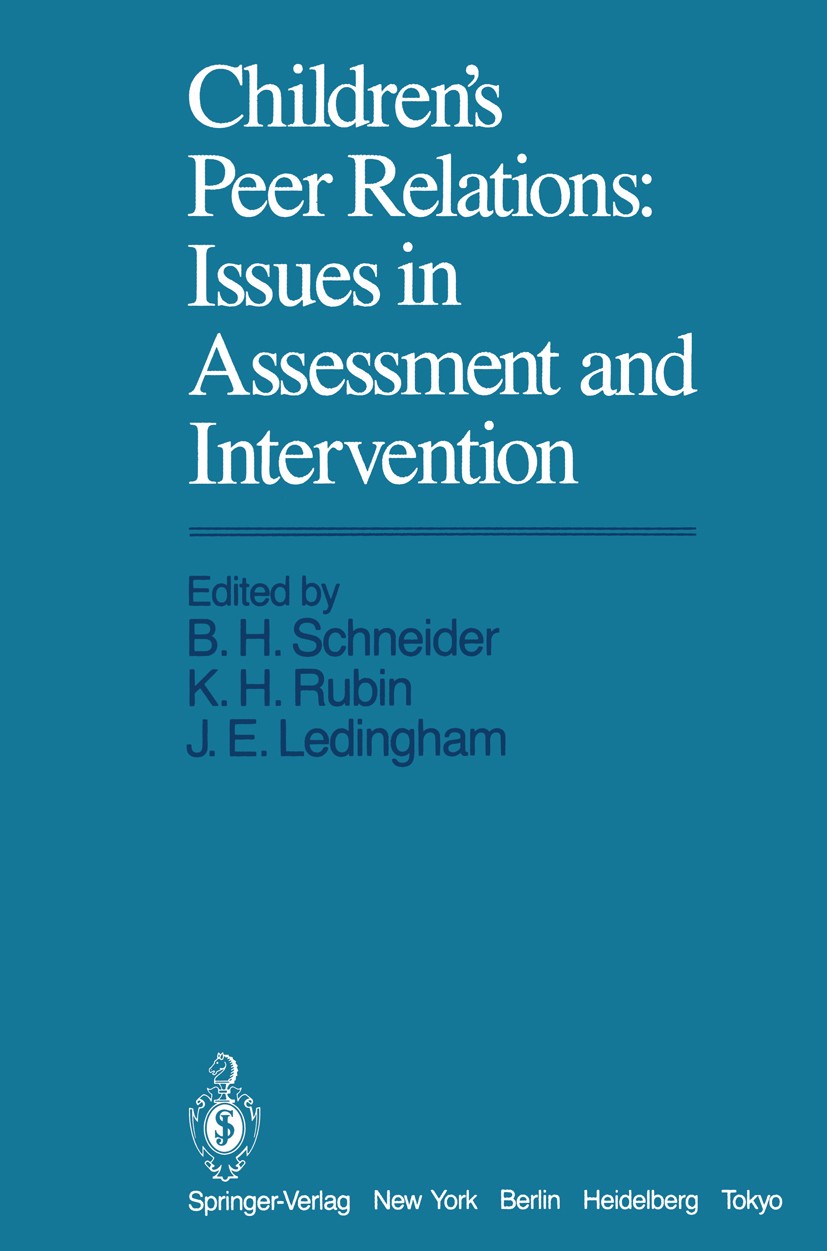| 书目名称 | Children’s Peer Relations: Issues in Assessment and Intervention | | 副标题 | Issues in Assessment | | 编辑 | Barry H. Schneider,Kenneth H. Rubin,Jane E. Leding | | 视频video | http://file.papertrans.cn/226/225280/225280.mp4 | | 图书封面 |  | | 描述 | Willard W. Hartup This volume amounts to an anniversary collection: It was 50 years ago that Lois Jack (1934) published the findings from what most investigators consider to be the first intervention study in this area. The experiment (later replicated and extended by Marjorie Page, 1936, and Gertrude Chittenden, 1942) concerned ascendant behavior in preschool children, which was defined to include: (a) The pursuit of one‘s own purposes against interference and (b) directing the behavior of others. Individual differences in ascendance were assumed to have some stability across time and, hence, to be important in personality development. But ascendance variations were also viewed as a function of the immediate situation. Among the conditions assumed to determine ascendance were "the individual‘s status in the group as expressed in others‘ attitudes toward him, his conception of these attitudes, and his previously formed social habits" (Jack, 1934, p. 10). Dr. Jack‘s main interest was to show that nonascendant children, identified on the basis of observations in the laboratory with another child, were different from their more ascendant companions in one important respect: They lacke | | 出版日期 | Book 1985 | | 关键词 | Children; Evaluation; Peers; Training; assessment; development; interaction; intervention; stability | | 版次 | 1 | | doi | https://doi.org/10.1007/978-1-4684-6325-5 | | isbn_softcover | 978-1-4684-6327-9 | | isbn_ebook | 978-1-4684-6325-5 | | copyright | Springer-Verlag New York, Inc. 1985 |
The information of publication is updating

|
|
 |Archiver|手机版|小黑屋|
派博传思国际
( 京公网安备110108008328)
GMT+8, 2025-11-12 12:08
|Archiver|手机版|小黑屋|
派博传思国际
( 京公网安备110108008328)
GMT+8, 2025-11-12 12:08


